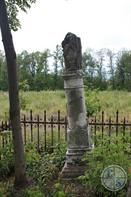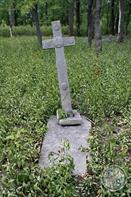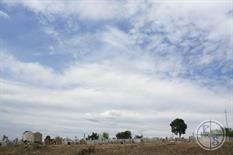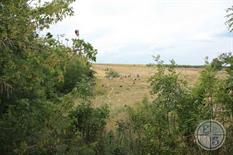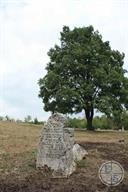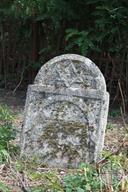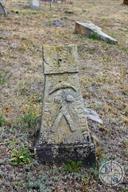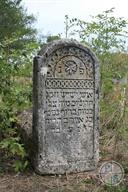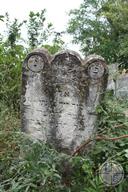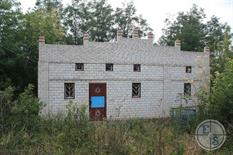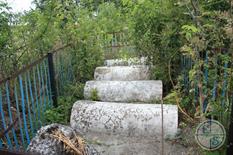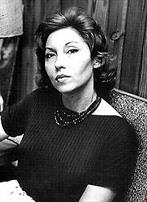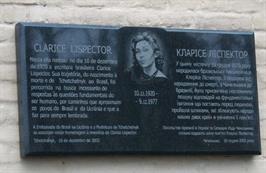Chechelnik
Vinnitsa Region
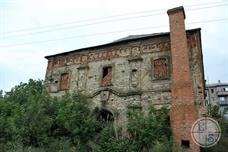 |
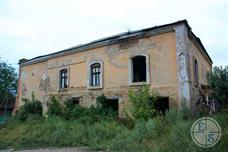 |
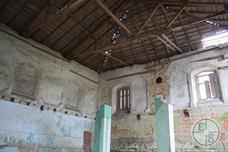 |
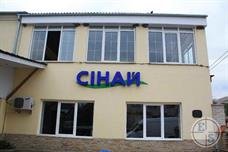 |
| Great Synagogue | The hotel "Sinai." Jewish history is reflected in local place namesх | ||
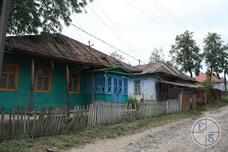 |
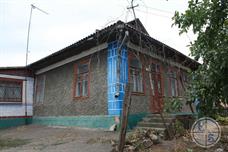 |
 |
|
| Jewish street near the synagogue | Bus Station |
Chechelnik, 2012, 2015
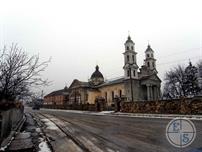 |
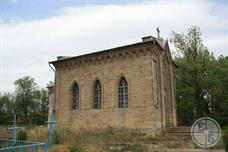 |
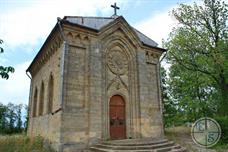 |
| Church of St. Joseph, built in 1751 by Prince Lubomirski | On the Catholic cemetery is the chapel, built in not typical for these places roman style |
Officials of the Grand Duchy of Lithuania, made up in the middle of the XVI century. economic description (lustration) Bratslav lands of the district, once brought out into the estates of some of the owners, "who call themselves the boyar-nobles, not being a boyar-nobles, and who knows where they came from." Among the impostors mentioned Gritsko Chechel illegally appropriated land in the south of Bratslav district.
At the beginning of the XVII century. Chechel family already had all the rights of the Polish gentry. Apparently, the same Chechel was founded a settlement on the river Chechelnik Savranke.
On the maps of Ukraine in 1648 and the Bratslav province in 1650, drawn up by the French military builder Guillaume Boplan, Chechelnik designated as a fortified town called Chachanik other communities with similar names on this map do not.
In 1635 the settlement received municipal rights, and the decision of the Polish Sejm has obliged all merchants selling wines of Wallachia and Moldavia, to carry them through on pain of confiscation Chechelnik goods and levying fines.
At the beginning of the XVII century. Chechel family already had all the rights of the Polish gentry. Apparently, the same Chechel was founded a settlement on the river Chechelnik Savranke.
On the maps of Ukraine in 1648 and the Bratslav province in 1650, drawn up by the French military builder Guillaume Boplan, Chechelnik designated as a fortified town called Chachanik other communities with similar names on this map do not.
In 1635 the settlement received municipal rights, and the decision of the Polish Sejm has obliged all merchants selling wines of Wallachia and Moldavia, to carry them through on pain of confiscation Chechelnik goods and levying fines.
It is known that in the summer of 1648 burghers and peasants of these places have supported the rebel Cossacks and Tatars, returning after the battle of Zborov in 1649, went through Chechelnik and ruining it, carried them away wealthy residents. The chronicle Khmelnitchyna "Titus Gayaven" ("impassable mud"), the author p. Shmuel, son of Fayvish p. Nathan Faytelya from Vienna to the list of the destroyed Jewish communities under the name Chelnik mentions, apparently Chechelnik.
In winter 1653/54, the Polish forces under komandyvaniem S. Czarnecki to the fight took place for some time, then the former hundreds of cities Bratslav Cossack regiment.
In 1664 in the register of Chechelnitsky podymnogo tax included only 20 houses and two mills. In autumn 1671 the Polish army once again knocked out of town Cossacks settled here, but already in 1672 under the terms of Bratslav voivodeship Buchach world sailing to Turkey. The Turks gave the edge under the control of the Cossack hetman.
Upon his return in 1699 Bratslav possession of Poland became the owner of the town, Prince Lubomirski. The newly strengthened and rebuilt the city, he founded a stud farm, which later became famous.
In 1702 - 1704 years. in the end robbed Haidamaks Seeds Palia, making a fortified camp just north of Chechelnik.
In 1768 the Polish king who rose against the adherents of the Confederation of Bar, pursued by Russian troops, were forced to take refuge in the Turkish dominions. In 1769 they returned to Podolia, and together with the Turkish and Tatar troops captured several towns in the Bratslav, among them Chechelnik. However, soon the Confederates were driven out by Russian troops.
In winter 1653/54, the Polish forces under komandyvaniem S. Czarnecki to the fight took place for some time, then the former hundreds of cities Bratslav Cossack regiment.
In 1664 in the register of Chechelnitsky podymnogo tax included only 20 houses and two mills. In autumn 1671 the Polish army once again knocked out of town Cossacks settled here, but already in 1672 under the terms of Bratslav voivodeship Buchach world sailing to Turkey. The Turks gave the edge under the control of the Cossack hetman.
Upon his return in 1699 Bratslav possession of Poland became the owner of the town, Prince Lubomirski. The newly strengthened and rebuilt the city, he founded a stud farm, which later became famous.
In 1702 - 1704 years. in the end robbed Haidamaks Seeds Palia, making a fortified camp just north of Chechelnik.
In 1768 the Polish king who rose against the adherents of the Confederation of Bar, pursued by Russian troops, were forced to take refuge in the Turkish dominions. In 1769 they returned to Podolia, and together with the Turkish and Tatar troops captured several towns in the Bratslav, among them Chechelnik. However, soon the Confederates were driven out by Russian troops.
Military action, robbery Haidamaks at the end of the 1760s., As well as the plague, swept to Podolia and Bratslav in the 1770 - 1771., Significantly worsened the well-being of their cities. A comparison of census results in 1765 and 1776's. shows a sharp decline in the Jewish community Chechelnik. Thus, according to the census in 1765 was 545 Jewish Chechelnik: 485 of them living in 96 houses of the Chechelnik and a 60 - to 11 homes New City (in the next census, he is not mentioned, probably because it has merged with itself Chechelnik). The census also found in 1776 only 183 Jews in 53 houses and "shack." Even if we assume that census in 1776 the Jews managed to hide some of the members of their community, the difference in numbers so much that could be interpreted as evidence of severe hardship experienced by the community between the mid-1760s and mid 1770s. By the early 1780s. Jewish population Chechelnik recovered.
After the accession of Bratslav province in 1793 by the Russian Empire Chechelnik was purchased by the Government of the princes Lubomirski and granted in 1795, Field Marshal Gudovich. Catherine II, driving on the newly acquired land, wished to call any of the towns in honor of his granddaughter, Olga Pavlova. The choice fell on Chechelnik, the most prominent place, which was renamed Olgopol and made the county town. Later Chechelnik was returned to its historical name and status of the former privately owned town.
After the accession of Bratslav province in 1793 by the Russian Empire Chechelnik was purchased by the Government of the princes Lubomirski and granted in 1795, Field Marshal Gudovich. Catherine II, driving on the newly acquired land, wished to call any of the towns in honor of his granddaughter, Olga Pavlova. The choice fell on Chechelnik, the most prominent place, which was renamed Olgopol and made the county town. Later Chechelnik was returned to its historical name and status of the former privately owned town.
In the 1860-1870's. a relatively small town became an important commercial and industrial centers in the south-east of Podolia. It has built two leather factories, alcohol, brick, sugar refining, brewing, and candle factories, there were several smaller industries and occupations. At the same time was finished lining the narrow-gauge railway, connected the town with the railway Haivoron - Vinnitsa. This has opened up new opportunities for trade, including Odessa and Kiev.
Chechelnik development facilitated by the fact that in the first half of XIX century. He became an important Hasidic center, attracting many Jews to the edge.
In 1871 it was in 4090 Chechelnik residents assigned to the trading class, and 2053 - to the rural village of 515 houses were reported. In 1889 in the town (not suburbs), there were 2400 inhabitants, of whom Jews constituted 93% of all (including suburbs) - 5526 people.
At the turn of the century the community has five prayer houses. These were for the most part "kloyzy"[1] synagogues or belonging to different associations, which included the most affluent residents, Hasidim, or committed to a particular rabbi or artisans of any specialty, each of which was his "spiritual reign."
At the beginning of the century Chechelnik, where in 1910 there were more than ten thousand inhabitants, was the largest county borough Olgopolskogo, yielding only to the population of the county town (more than eleven thousand inhabitants) was populated almost exclusively by Jews.
Chechelnik development facilitated by the fact that in the first half of XIX century. He became an important Hasidic center, attracting many Jews to the edge.
In 1871 it was in 4090 Chechelnik residents assigned to the trading class, and 2053 - to the rural village of 515 houses were reported. In 1889 in the town (not suburbs), there were 2400 inhabitants, of whom Jews constituted 93% of all (including suburbs) - 5526 people.
At the turn of the century the community has five prayer houses. These were for the most part "kloyzy"[1] synagogues or belonging to different associations, which included the most affluent residents, Hasidim, or committed to a particular rabbi or artisans of any specialty, each of which was his "spiritual reign."
At the beginning of the century Chechelnik, where in 1910 there were more than ten thousand inhabitants, was the largest county borough Olgopolskogo, yielding only to the population of the county town (more than eleven thousand inhabitants) was populated almost exclusively by Jews.
Among the Jews there were many Chechelnitsky hereditary artisans. But the workmen were people on the lowest rung of the social ladder shtetl, which occupied the top step of the entrepreneurs and traders - grain harvesters, vegetables, fruits, woods, etc., that send their goods by rail to major cities - Odessa, Kherson, Nikolaev, Yekaterinoslav. Jews provided the raw material and sold the products of local spirtoochistitelnogo, sugar refining, and machine factories. Their property had two creameries, breweries, candy factory, eight warehouses forests, mills, and about sixty different shops and stores. Among the Jews were the owners of the professions: teachers, doctors, dentists, pharmacists and lawyers.
During the Civil War took place alternately Polish, Austrian and German, Ukrainian and Red Army troops. The arrival of the regular army is usually accompanied by the looting of private homes and businesses.
"A Jew by the name of vodka Feygl traded in the market. In the town at that time were Petliurists, they got drunk and wrecked Jewish homes. The Jews vainly tried to persuade Feygl stop this trade. In the end, she declared herem, and her husband came to Rabbi Dayan Yoselu and asked them to arrange a divorce. "Why do you ask?" - Asked the rabbi. - "It is bad." - "What does it mean, in bed, or what?" - "Yes, in bed, but should be in the grave."
During the Civil War took place alternately Polish, Austrian and German, Ukrainian and Red Army troops. The arrival of the regular army is usually accompanied by the looting of private homes and businesses.
"A Jew by the name of vodka Feygl traded in the market. In the town at that time were Petliurists, they got drunk and wrecked Jewish homes. The Jews vainly tried to persuade Feygl stop this trade. In the end, she declared herem, and her husband came to Rabbi Dayan Yoselu and asked them to arrange a divorce. "Why do you ask?" - Asked the rabbi. - "It is bad." - "What does it mean, in bed, or what?" - "Yes, in bed, but should be in the grave."
May 15, 1919 in Chechelnik became one of the peasant gangs, bandits gathered together all the Jews in the area. Someone started a provocative rumor that alleged in the nearest town Obodovka Jews attacked the Ukrainians, and that it did not happen in the Chechelnik, you must immediately deal with the local Jews. But among the peasants found Chechelnitsky reasonable people who supported the proposal of Comrade Ivan Sotovskogo first to know what really happened in the Obodovke. When it became clear that there is a result of the pogrom, killing several hundred Jews, farmers have decided not to shed blood in his town. Same with the bandits robbing Jewish houses had been killed 17 people.
Soviet power was established in Chechelnik in June 1920
In March 1923 became a district center Chechelnik Tulchinsky County and has been translated into the category of villages.
During the Civil War in the early years of Soviet Jewish emigration has increased markedly in the U.S. and Eretz Yisrael. Who could, fled from the pogroms and the requisition of jewelry. Jews and went to the big cities - in Odessa and Kiev.
Great prestige enjoyed this Tzaddik p. Baruch the son of p. Shlomo, who lived in the town in 1920-30-ies.
In 1924 a Jewish school, studied 108 children, mostly from poor families, children of more affluent parents attended Ukrainian school. In the area of ??the Jewish school he worked as educational program for adults with instruction in Russian.
Soviet power was established in Chechelnik in June 1920
In March 1923 became a district center Chechelnik Tulchinsky County and has been translated into the category of villages.
During the Civil War in the early years of Soviet Jewish emigration has increased markedly in the U.S. and Eretz Yisrael. Who could, fled from the pogroms and the requisition of jewelry. Jews and went to the big cities - in Odessa and Kiev.
Great prestige enjoyed this Tzaddik p. Baruch the son of p. Shlomo, who lived in the town in 1920-30-ies.
In 1924 a Jewish school, studied 108 children, mostly from poor families, children of more affluent parents attended Ukrainian school. In the area of ??the Jewish school he worked as educational program for adults with instruction in Russian.
In the mid-1920s. in the town had about 200 artisans, about half of them were combined into a savings and loan association.
In Chechelnik created a Jewish village council, chaired by James Shloyna (during the Nazi occupation, he led the underground Bershad ghetto and was shot in just five days before his release in March 1944, was part of a group Shloyna partisans of James Talisa). Chairman of the Jewish collective farm was a Ukrainian named Petr Konecny, his son was the leader Bronislaw kolkhoz Komsomol organization (and during the occupation - policeman who distinguished themselves particularly brutal).
In 1939, Jews lived there in 1327 (66% of the population).
In Chechelnik created a Jewish village council, chaired by James Shloyna (during the Nazi occupation, he led the underground Bershad ghetto and was shot in just five days before his release in March 1944, was part of a group Shloyna partisans of James Talisa). Chairman of the Jewish collective farm was a Ukrainian named Petr Konecny, his son was the leader Bronislaw kolkhoz Komsomol organization (and during the occupation - policeman who distinguished themselves particularly brutal).
In 1939, Jews lived there in 1327 (66% of the population).
Prior to the occupation of it Chechelnik had to evacuate dozens of Jewish families, many men were drafted into the army.
The Red Army had left town July 24, 1941 In the first days of occupation by Chechelnik passed to the north-east of the numerous German and Romanian motorized troops.
One August day in 1941 the Nazis herded Jews into the central square, set before a crowd of guns, Bolsheviks demanded the release and preparing the shooting, several people forced to dig a hole. The unexpected arrival of a German officer interrupted the preparations for the campaign of destruction. His miraculous rescue Jews associated with the person acting in these places the legendary guerrilla Kalashnikov allegedly suddenly appeared dressed in German uniforms. It was, perhaps, the last hero of the shtetl folklore, generated by fear and hope of the Jews of Transnistria. According to another version, the time came to town one of the representatives of the Romanian occupation authorities.
Until the fall of 1941, has not yet been established control of the occupation, looting took place in the village shops, violence and bullying are often ended with the murder of Jews. In one massacre, and was attended by festively dressed peasant woman. Many Jewish families tried to flee, but it was too late, and most of the refugees returned.
The Red Army had left town July 24, 1941 In the first days of occupation by Chechelnik passed to the north-east of the numerous German and Romanian motorized troops.
One August day in 1941 the Nazis herded Jews into the central square, set before a crowd of guns, Bolsheviks demanded the release and preparing the shooting, several people forced to dig a hole. The unexpected arrival of a German officer interrupted the preparations for the campaign of destruction. His miraculous rescue Jews associated with the person acting in these places the legendary guerrilla Kalashnikov allegedly suddenly appeared dressed in German uniforms. It was, perhaps, the last hero of the shtetl folklore, generated by fear and hope of the Jews of Transnistria. According to another version, the time came to town one of the representatives of the Romanian occupation authorities.
Until the fall of 1941, has not yet been established control of the occupation, looting took place in the village shops, violence and bullying are often ended with the murder of Jews. In one massacre, and was attended by festively dressed peasant woman. Many Jewish families tried to flee, but it was too late, and most of the refugees returned.
The ghetto was organized in the Jewish neighborhoods in the modern streets of Kalinin, Lenin and Marx. It housed about 1,000 Jewish Chechelnik, as well as Jews from Kodyma and Gerbils, survivors of the shootings and deportations to the extermination camp, located in the village Domanov ka (now Mykolaiv region). All Jews were ordered to wear the yellow Star of David.
In autumn 1941, Chechelnik came more than a thousand Jews were deported from Bessarabia and Bukovina. Some of them were with him jewels and gold, and bribes given by representatives of the Romanian administration of funds, often rescued all the inhabitants of the ghetto.
In January 1943, became a regular Chechelnik receive financial assistance from Bucharest, was opened a dining room for the children and the needy. However, in crowded ghettos rampant starvation, typhus and other infectious diseases, causing about half of the deportees died. Employees of Ukrainian police and accidentally fell into place the German Army soldiers did not miss the opportunity to make fun of Jews.
At the beginning of 1942 in a forest near the village of Kurenivka Chechelnitsky district, in a wooden building of the former Old Believers monastery were burned alive several hundred Jews from Bessarabia and Bukovina (the stone ruins of the abbey church was dismantled after the war).
In autumn 1941, Chechelnik came more than a thousand Jews were deported from Bessarabia and Bukovina. Some of them were with him jewels and gold, and bribes given by representatives of the Romanian administration of funds, often rescued all the inhabitants of the ghetto.
In January 1943, became a regular Chechelnik receive financial assistance from Bucharest, was opened a dining room for the children and the needy. However, in crowded ghettos rampant starvation, typhus and other infectious diseases, causing about half of the deportees died. Employees of Ukrainian police and accidentally fell into place the German Army soldiers did not miss the opportunity to make fun of Jews.
At the beginning of 1942 in a forest near the village of Kurenivka Chechelnitsky district, in a wooden building of the former Old Believers monastery were burned alive several hundred Jews from Bessarabia and Bukovina (the stone ruins of the abbey church was dismantled after the war).
In farm stables Zhabokrichka village (village council Katashinsky Chechelnitsky area) were placed hundreds of Romanian Jews, many of them died in the winter of 1941/42 years. Both of these places are not marked by memorable characters. Chechelnik Jews knew about the destruction of stocks in the surrounding villages and towns, and all these years they lived in fear of reprisals.
In 1943 the Romanian authorities sent 60 young Jews to work in Nikolaev, of which 15 people died.
Many Jews Chechelnik collaborated with the guerrillas, in the ghetto there were partisan "Jewish element".
Most Chechelnitsky Jews survived the occupation and the Jewish community in Chechelnik preserved. All the years of occupation remained in the ghetto and the Hasidic Tzaddik - "Chechelnik rabbi."
March 17, 1944 the Red Army liberated from the occupiers Chechelnik.
After the war, the community had its own rabbi Chechelnik, traditional community life preserved in one way or another before the end of 1970.
In the early 1990s. Chechelnik in a population of about six thousand people lived about seventy Jews, by 1998 they had eight - mostly the infirm elderly.
In 1943 the Romanian authorities sent 60 young Jews to work in Nikolaev, of which 15 people died.
Many Jews Chechelnik collaborated with the guerrillas, in the ghetto there were partisan "Jewish element".
Most Chechelnitsky Jews survived the occupation and the Jewish community in Chechelnik preserved. All the years of occupation remained in the ghetto and the Hasidic Tzaddik - "Chechelnik rabbi."
March 17, 1944 the Red Army liberated from the occupiers Chechelnik.
After the war, the community had its own rabbi Chechelnik, traditional community life preserved in one way or another before the end of 1970.
In the early 1990s. Chechelnik in a population of about six thousand people lived about seventy Jews, by 1998 they had eight - mostly the infirm elderly.

My shtetl
My shtetl
Jewish towns of Ukraine
Jewish towns of Ukraine


